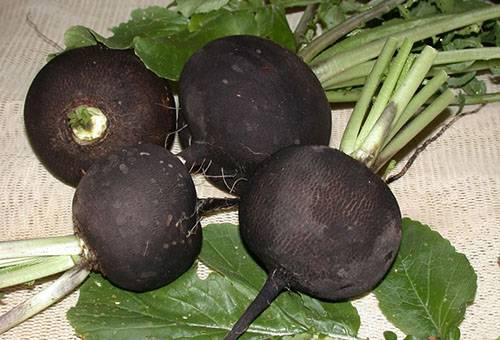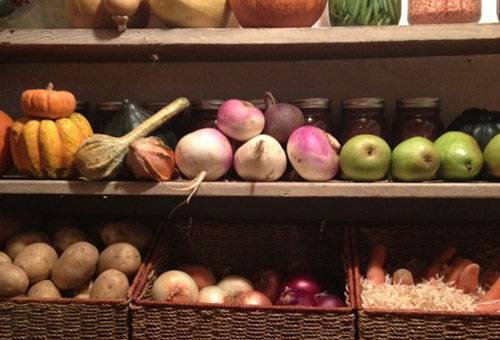How to properly store radishes in the winter in a basement, pit or refrigerator?
Legends are literally written about the benefits of such a vegetable as radish. Therefore, you need to know not only salad recipes, but also how to store radishes. After all, in terms of strengthening the immune system, it is indispensable. Apparently, this is why it is grown not only in the provinces, that is, in the countryside, but also in the city. There is nothing simpler - to sow seeds in a small area, which is located directly under the balcony, or if there is a small piece of land - that is, a vegetable garden. But it doesn't end there.
After harvesting a harvest, albeit not so large, at your own dacha or simply purchasing vegetables for the winter, questions arise. For example, how can we guarantee to preserve vitamin reserves until spring? Pertinent questions with answers.

Conditions for preparation for storage
This is an important point, both for the city and for the village. After all, in the cold, our beauty is beautiful not only in salads. It is life-saving at this time of year, especially for colds. And therefore, it is in vain that someone thinks that it can simply be thrown into a heap, and then only taken as needed. This vegetable must be carefully and properly prepared for storage. And there are several relevant points here. Taking these into account will ensure excellent conditions for root crops.
- Initially, it is important to choose the right winter varieties - they are better stored, tastier and more productive.
- It is necessary to grow crops correctly, watering and fertilizing on time and according to all the rules.
- You should not delay the collection, otherwise the overripe specimen will taste bitter, lose its quality or disappear altogether.
- It is advisable to harvest only in dry weather (otherwise mold cannot be avoided!) and, of course, before frost sets in.
- You should clean the fruits from the soil (very carefully, without damaging the skin!) before storing. Although there is an opinion that this is not always necessary.
- After cleaning, you need to cut off the tops without damaging the vegetable itself (however, 1-2 centimeters are left).
- Root vegetables must be stored dry, not wet (fruits should only be dried in the shade!).
- It is very important to properly arrange your storage space so that your vitamin salads will delight you until spring.
Advice
After drying the fruits, they need to be carefully examined. It is important to exclude defective specimens, as well as those that have sprouted, withered, or are infested with worms. That is, they select strong root vegetables, the sizes of which should be almost the same. Usually those that are smaller and those that were rejected for various reasons are allowed into food.
Storage space
Not everyone who loves this vegetable for its valuable properties lives in a village where there are cellars and other similar storage facilities. Although it is possible to build something similar in the city (say, an underground floor in a garage). But the approach must be serious. After all, our heroine, like her other brothers in the garden, runs the risk of not being able to withstand some temptations and will simply become unfit for both consumption and treatment (remember juice or compresses, drinking with bitter vegetables).
So, where, in what place is it advisable or possible to store radishes in winter? There are several options, let's look at the most popular ones.
- Fridge.
This is an ideal option for city dwellers. Store part of the harvest packed in polyethylene (it is perfectly stored in winter for at least 1-2 months).True, there is a problem - the capacity of refrigerators is not enough to store large quantities, because other vegetables are also needed. But everything can be resolved. Let's look at other reliable options.
- Pit.
It digs 60-70 centimeters deep and up to one hundred centimeters wide. Having lined the bottom with straw, the vegetable is placed here and, sprinkled with sand, covered with a layer of earth. During frosts, it is advisable to cover the hole with snow. Since our character does not need ventilation, he will have a great time here until spring. Usually healthy specimens are placed here. The rest is put in the refrigerator (for food) and the cellar.
- Basement.
The most ideal way. After all, radish does not last long in the open air (under the ground, sand, snow, etc.). By the way, there is also a way to store it in the basement: in plastic bags with an air hole (root vegetables should be sprinkled with sand).
But more often than not, they simply put it in the basement. In order for it to last longer, all conditions are created for it.
- Firstly, the packaging is thought out - wooden boxes or barrels. Here, clean and healthy vegetables will lie sprinkled with wet sand. All this is placed directly on the floor, in a word, they choose the coldest place.
- Secondly, it is important to create the desired temperature, this is zero - plus one degree.
- Thirdly, we will have to somehow get rid of dampness; it is the enemy of our heroine, and other vegetables as well.
- Fourthly, it should always be ventilated, that is, the issue of ventilation is not the last in the chain of all the nuances.
- Fifthly, before laying, all cracks and potholes must be sealed, and then rodents will not be afraid.
- Sixth, it is better to sprinkle the earthen floor with fresh, clean, dry sand.
- Seventh, the temperature is ensured no more than 1-2 degrees, humidity - no less than 85-90%.
Advice
There is no need to put radishes together with apples or pears - the fruits, having absorbed the aromas of their bitter neighbor, will become tasteless, and they can also share fungi with them, which reduce their shelf life.

